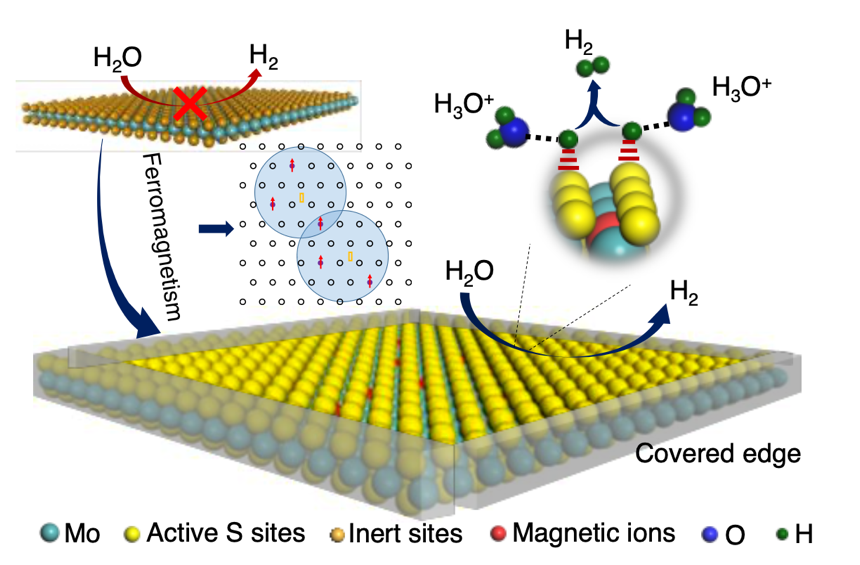Similar to the fact that a person would act differently when being alone, materials can also obtain unique qualities when being separated in atom-level, among which is the enhanced catalyzing ability.
Single-atom catalysts have shown enormous catalyzing capability since its first appearance. By preparing 2-dimensional (2D) single-atom monolayer crystals, scientists can expect to get catalysts with high loading density of active sites as well as great stability. However, the question herein is that only the edge atoms in the 2D monolayer have shown this effect while most of the atoms are inside the basal plane, which is critically limiting the efficiency of catalysts in this form.
In a new study published in Angewandte Chemie International Edition, Prof. YAN Wensheng’s team from the National Synchrotron Radiation Laboratory of the University of Science and Technology of China (USTC) of the Chinese Academy of Sciences, and the collaborators, established bridges between atoms and made catalysts of high quality.
What the scientists did is to apply the substitutional doping method of magnetic Co ions to prepare samples of Co-doping MoS2 monolayer, denoted as Co-MoS2, and then characterize and examine its catalyzing effect on electrochemical hydrogen evolution reaction (HER).
The doped Co ions act as bridges between sulfate atoms, connecting S atoms in the edge region and basal plane and thus, inducing ferromagnetic ordering in Co-MoS2. The highly mixed electron pattern between Co and S atoms enables the S inside the plane to become active sites during the catalyzing procedure.
They conducted experiments to confirm a dramatically increased exchange current density during HER in acid electrolyte, suggesting the greatly enhanced electrical catalyzing effect of MoS2 compared with former results.
This study can be generalized to other 2D monolayers which could be developed as single-atom-layer catalysts by arousing the originally inert basal plane atoms via manipulating the ferromagnetism. Like magicians of processing, these catalysts can change how reactions operate.

Diagrammatic representation of how basal atoms are activated by ferromagnetism (Image by DUAN Hengli et al)
(Written by LIU Zige, edited by LI Xiaoxi, USTC News Center)